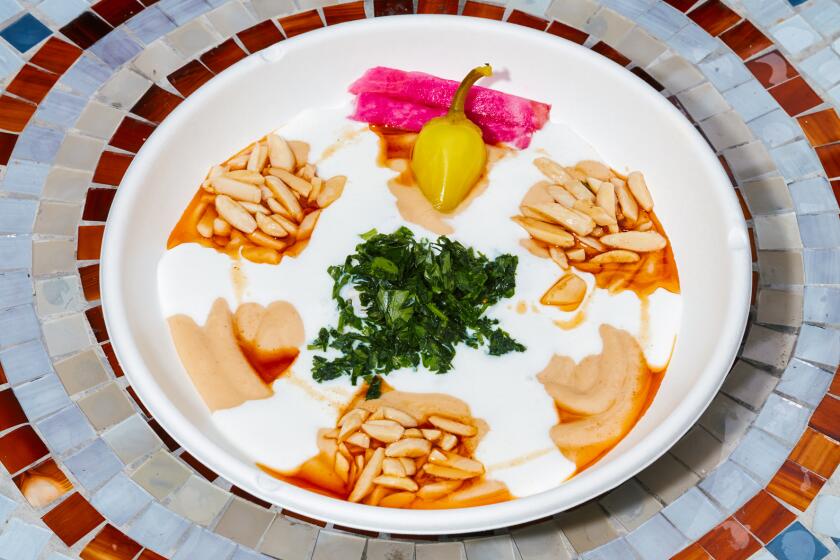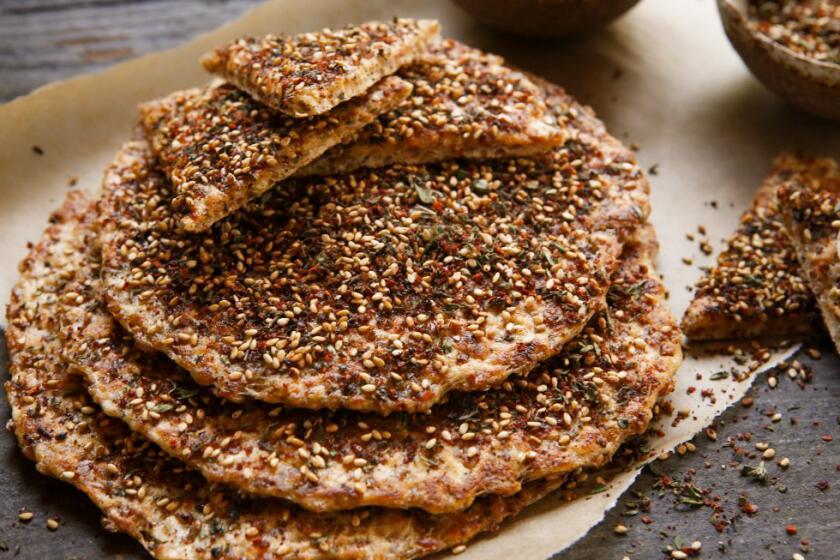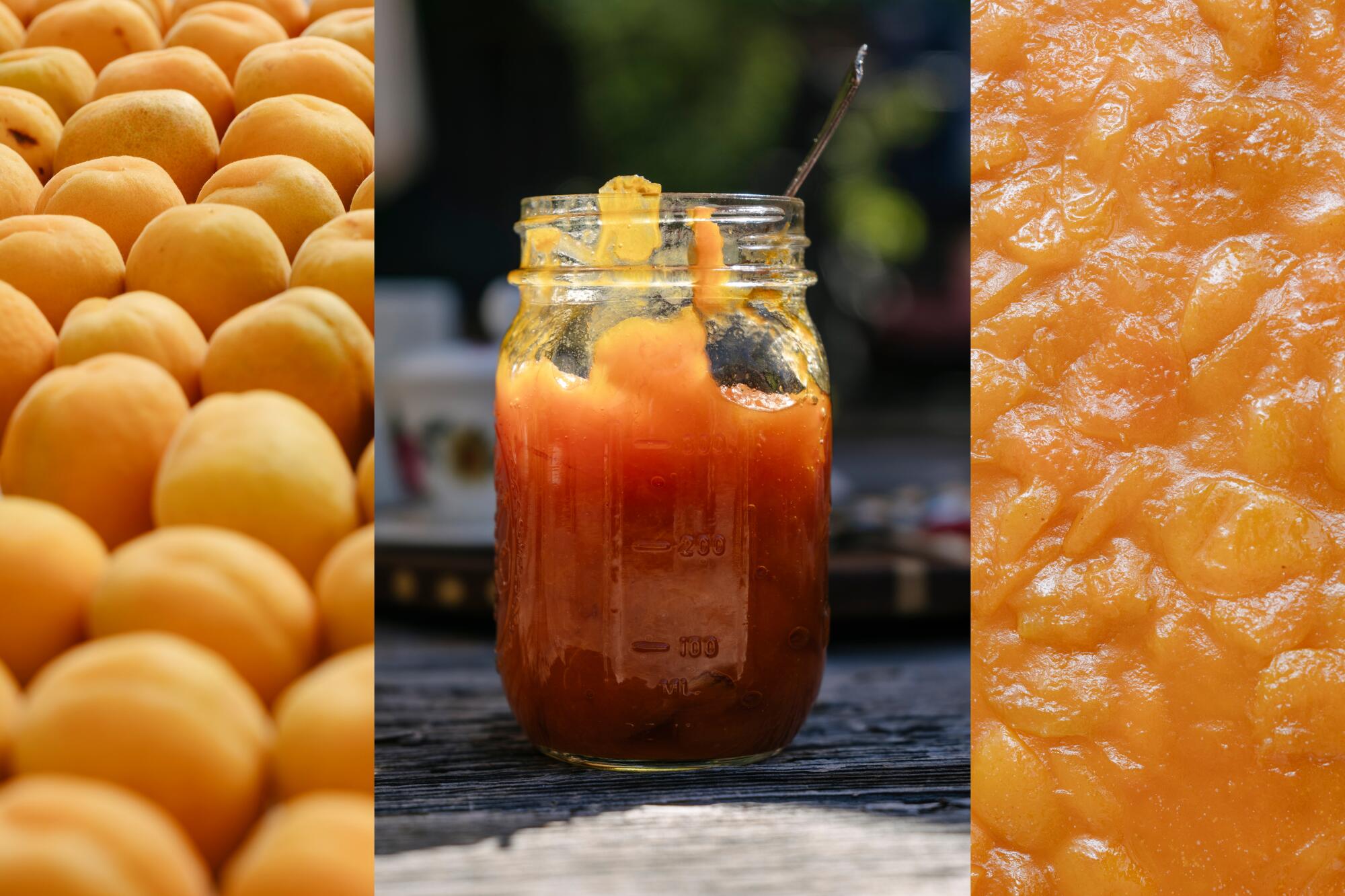
In its small glass jar, the apricot jam looked smooth and dense — closer to apple butter than glossy preserves. Apricots will always darken during cooking, but this stuff had deepened a few shades past the usual dusky-bright orange. The color brought to mind a handful of newish pennies. Its murkiness was enticing.
Off came the lid with a satisfying pop.
The taste of the jam boomed stereophonically, as if two high-fidelity signals were converging. One relayed the flavors of fresh apricots, honeyed and floral and taut. The other piped in the essence of dried apricots. Not the sort of shriveled castoffs that have turned to stone in a cupboard’s farthest regions but the plump delights you find at farmers markets from vendors who maintain their own orchards, who sell dried fruits that still convey something of their original lushness.
For a few seconds, these blending of notes beat rhythmically: tart-sweet, tart-sweet, tart-sweet. I’d never known jam to have such a crazy effect before. I wanted more. Soon I was scraping out the last coppery smears.
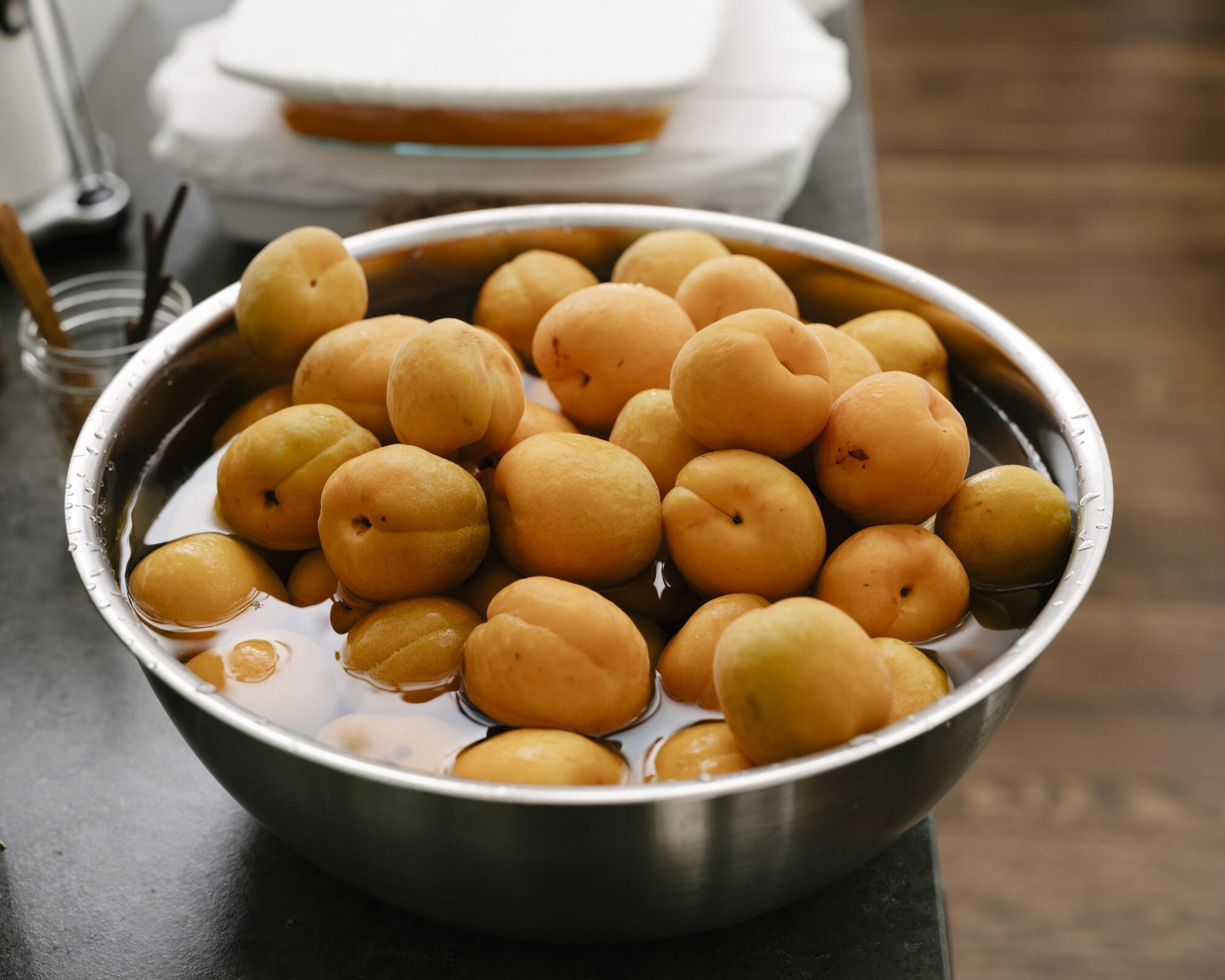
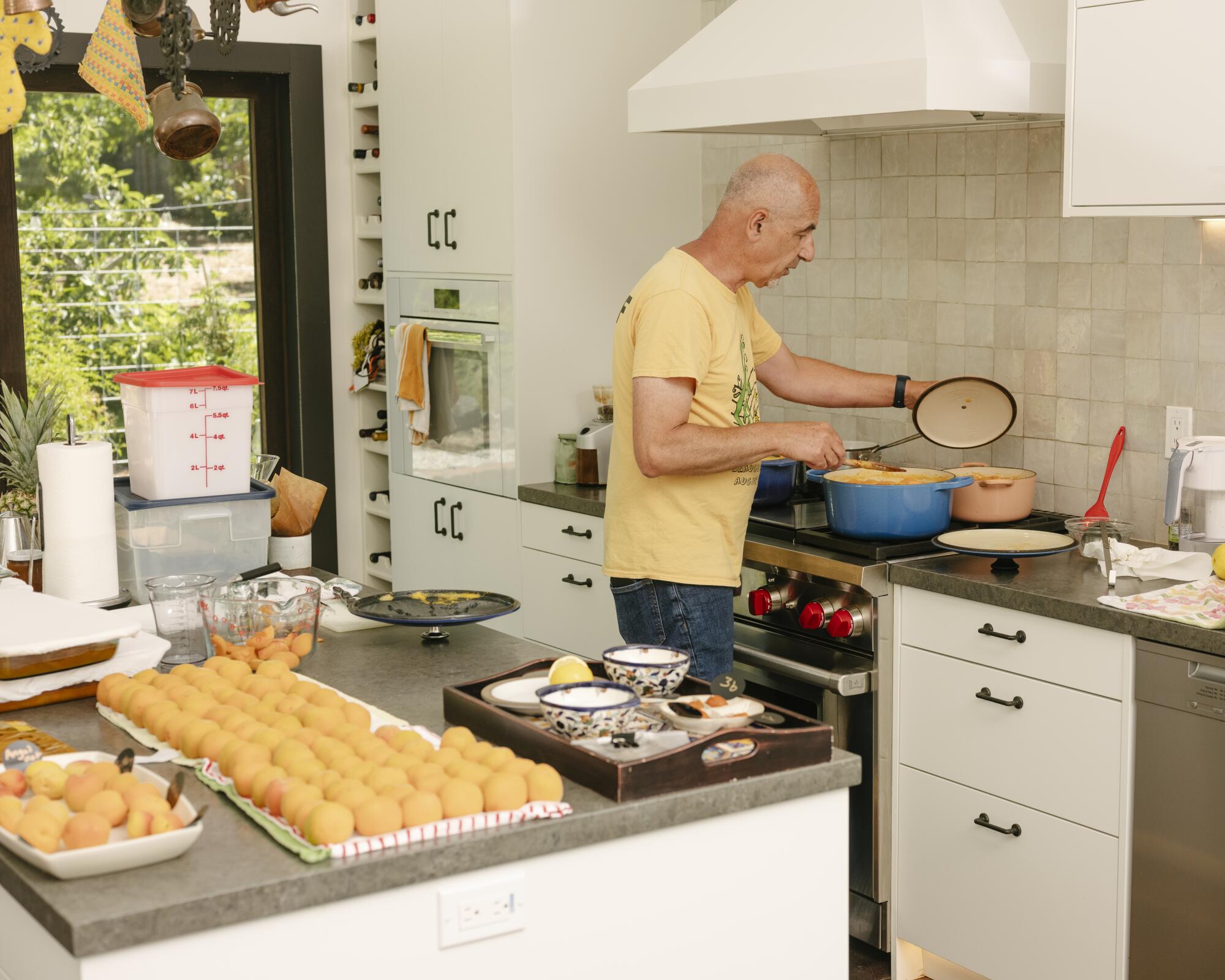
This absurdly delicious, unexpected gift first arrived in September 2020, six grim months into the pandemic, when I needed its uplift the most. The style of jam-making comes from Lebanese Syrian preserving traditions. It turned out to be another doorway into a culture I was already immersed in loving and learning about through longtime friends I value as family.
Two brothers create a totally unique Syrian-Circassian culinary experience at Nawal, their weekend backyard pop-up
In phonetic Lebanese Arabic, the name for the recipe is murabba el meshmosh. The words translate straightforwardly as “apricot preserves” — meshmosh, or apricot, is also pronounced as mishmish in regional dialects, with other close variations across southwest Asia and North Africa — but the method for making the jam is not so direct. It involves boiling the sugared fruit and then baking it in the hot sun (retrieving it at night) for two to 10 consecutive days until it sets and infinitely intensifies.
That’s why the nature of the flavor registered initially as extraordinary but also, in the best way, peculiar. I’d never before tasted fruit suspended midtransformation between gently cooked freshness and dried in the sun.
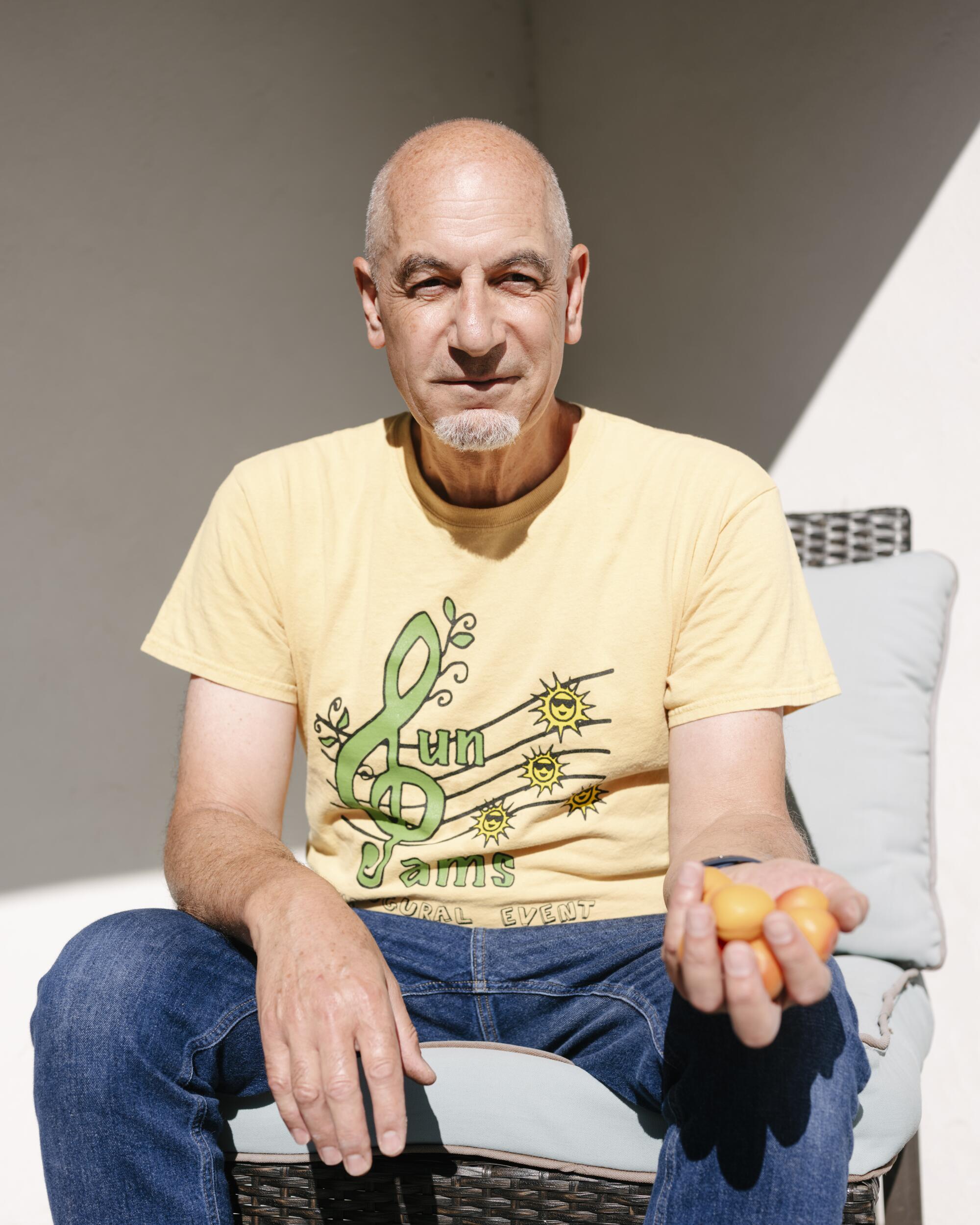
Amer Budayr had crafted the jam. A retired endocrinologist, he lives in Orinda, a town nine miles northwest of downtown Oakland that’s blessed with one of the sunnier microclimates in the Bay Area. Budayr was born in Damascus, Syria. His family moved to Beirut when he was 11. (Without national borders or political crises, the driving distance between the cities would be about two hours.) He graduated from medical school at the American University of Beirut in 1982, seven years into the Lebanese civil war. Carrying one suitcase, he left for the United States, unsure at 26 years old if he would ever return to Lebanon.
Budayr never moved back, but he did make trips to visit his mother. One summertime in the early 2000s he brought his wife, Anna, whom he’d met in the United States, to Beirut. She noticed trays full of apricot jam drying in the sun on her mother-in-law’s condo patio and marveled at the flavor when it was time for canning. She questioned Amer about the process.
“Oh, don’t worry about that,” he told her. “It’s too complicated.”
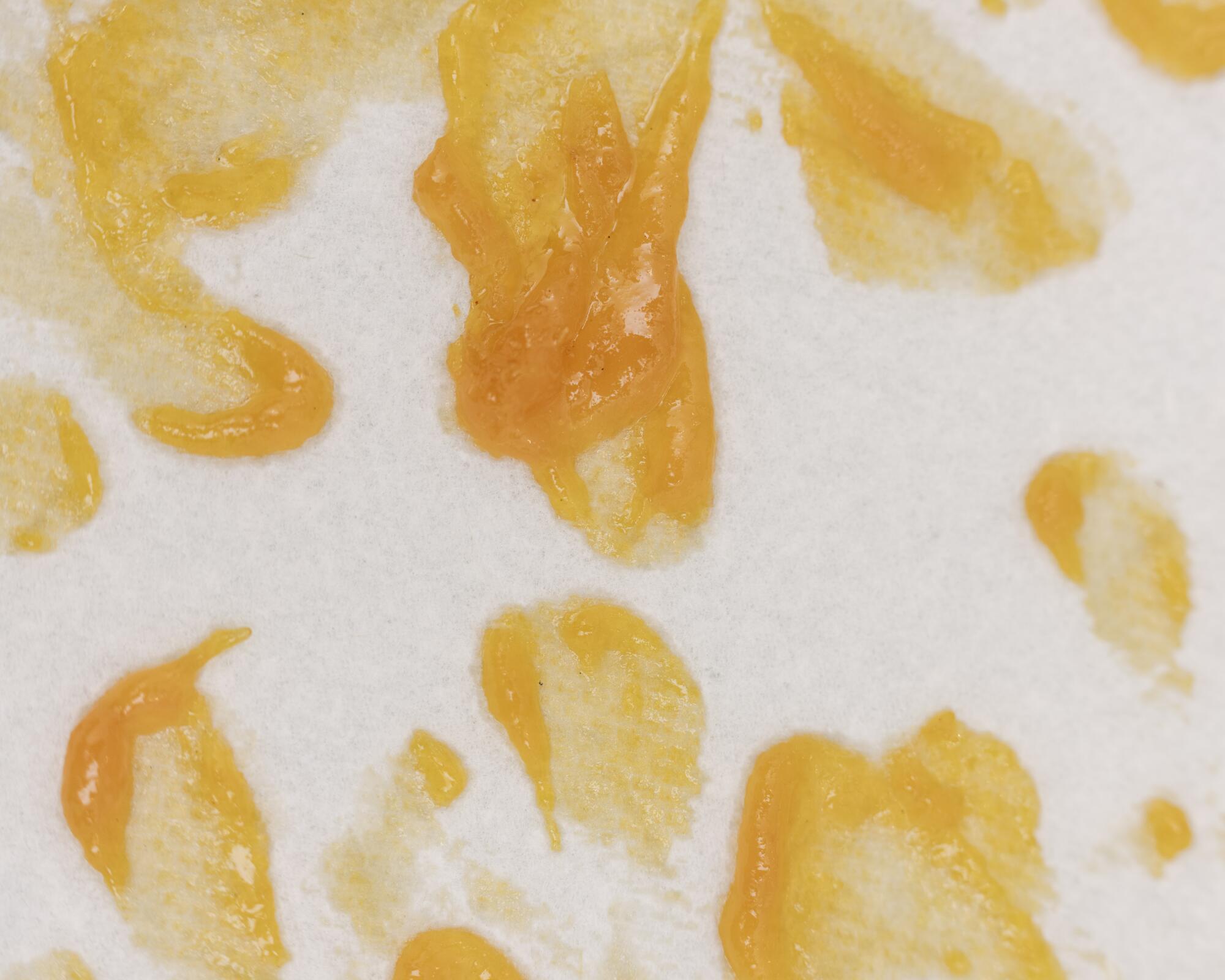
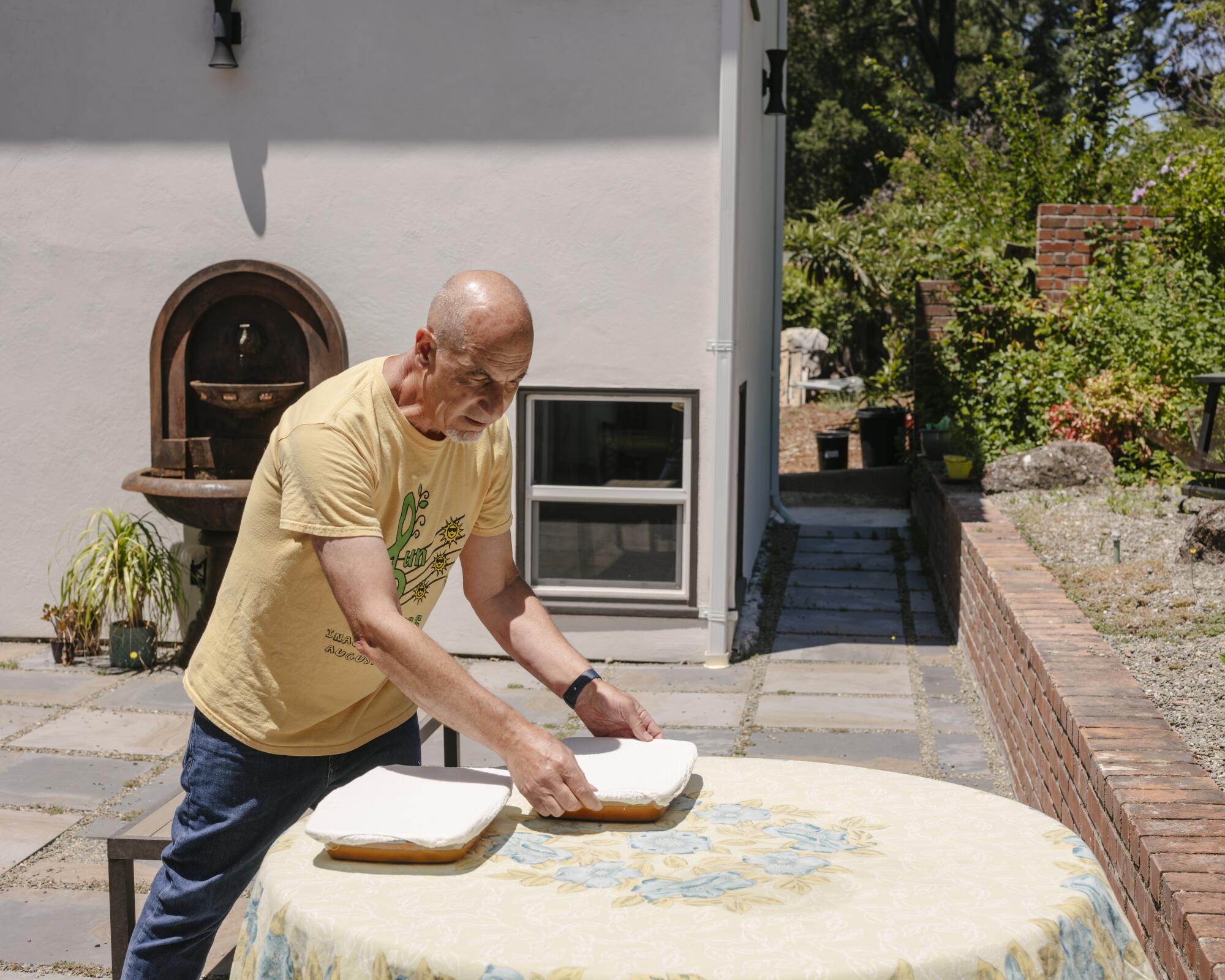
That was pretty much all Anna needed as provocation to start researching recipes and, as the decade progressed, falling down rabbit holes watching online videos. Eventually the couple felt motivated together to master the jam. No commercial product anywhere nearby equaled the pleasures of the homemade version, for starters, and the excellence of the Bay Area’s organic apricots rivaled the superb fruit grown around Damascus and in Lebanon’s fertile Bekaa Valley.
For Amer, the undertaking has revived memories of his mother’s annual rituals around murabba el meshmosh, prepared from the apricot harvest from relatives’ nearby orchards. He can conjure images of trays splayed across their large third-floor terrace in Damascus.
“Making the jam now may be the only connection to home that I recall,” he told me recently.
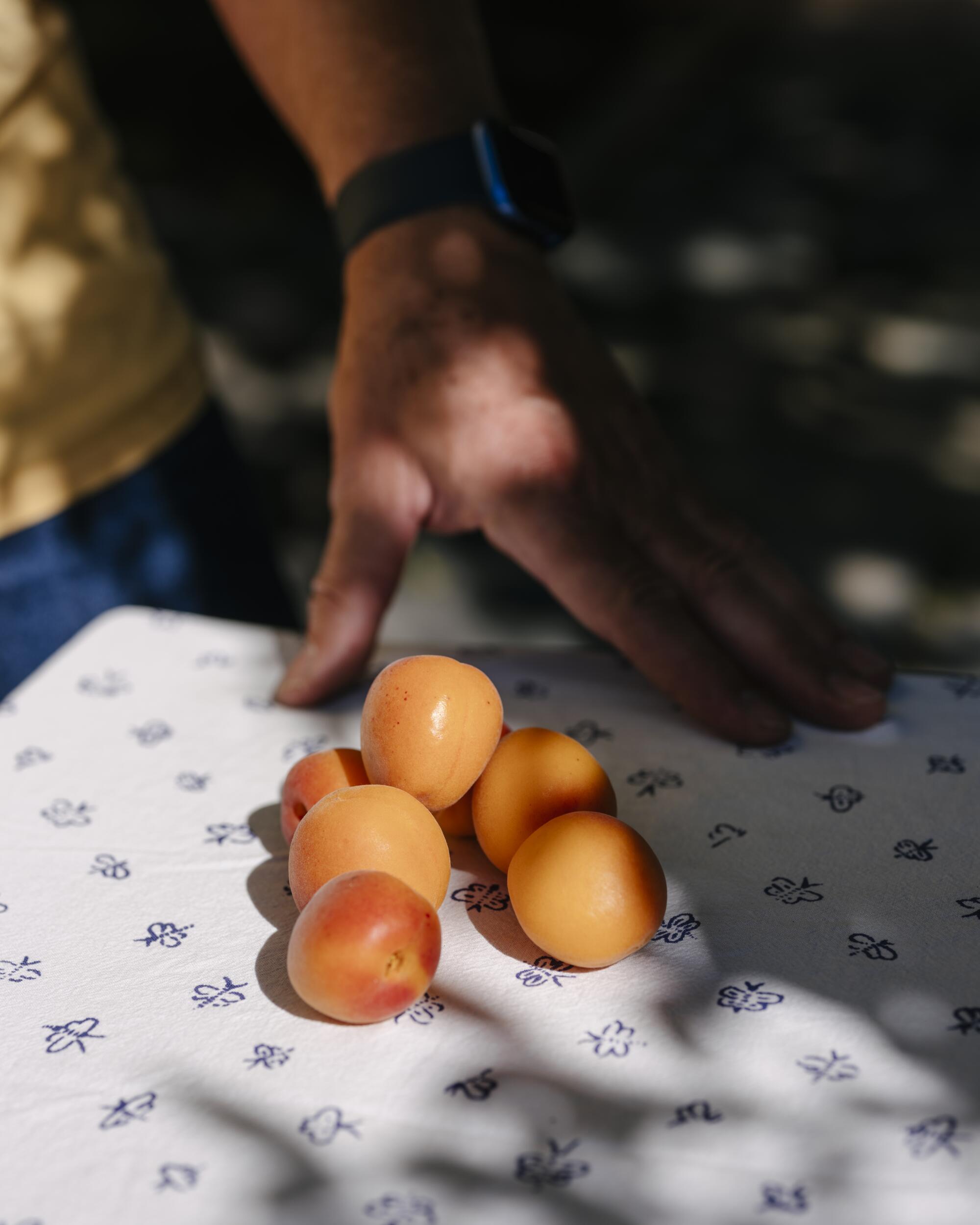
Music has long been one of Amer’s passions, to the point that the Budayrs built a modest backyard stage for daytime performances. In 2015 they founded a small family-run nonprofit called the Sunjams Foundation, which hosts outdoor concerts to benefit music education in the area’s under-resourced public schools. When Amer retired in 2018, he took on the annual job of tackling the sun-baked jam. He collects an average of 200 pounds of apricots each year from local farms and spends six or so weeks through June and July — sometimes, depending on the weather, starting early in May or stretching into August — centering his life around the task.
Most of the jars are sold as fundraisers for Sunjams. No batch is ever quite like the other. Some lean more amber or golden or yam-colored in their final appearance; some lightly sting the taste buds with astringency while others melt with fudgy sweetness. They all possess the same concentrated quality, though: the unique ambrosia derived from one of the world’s oldest methods of food preservation.
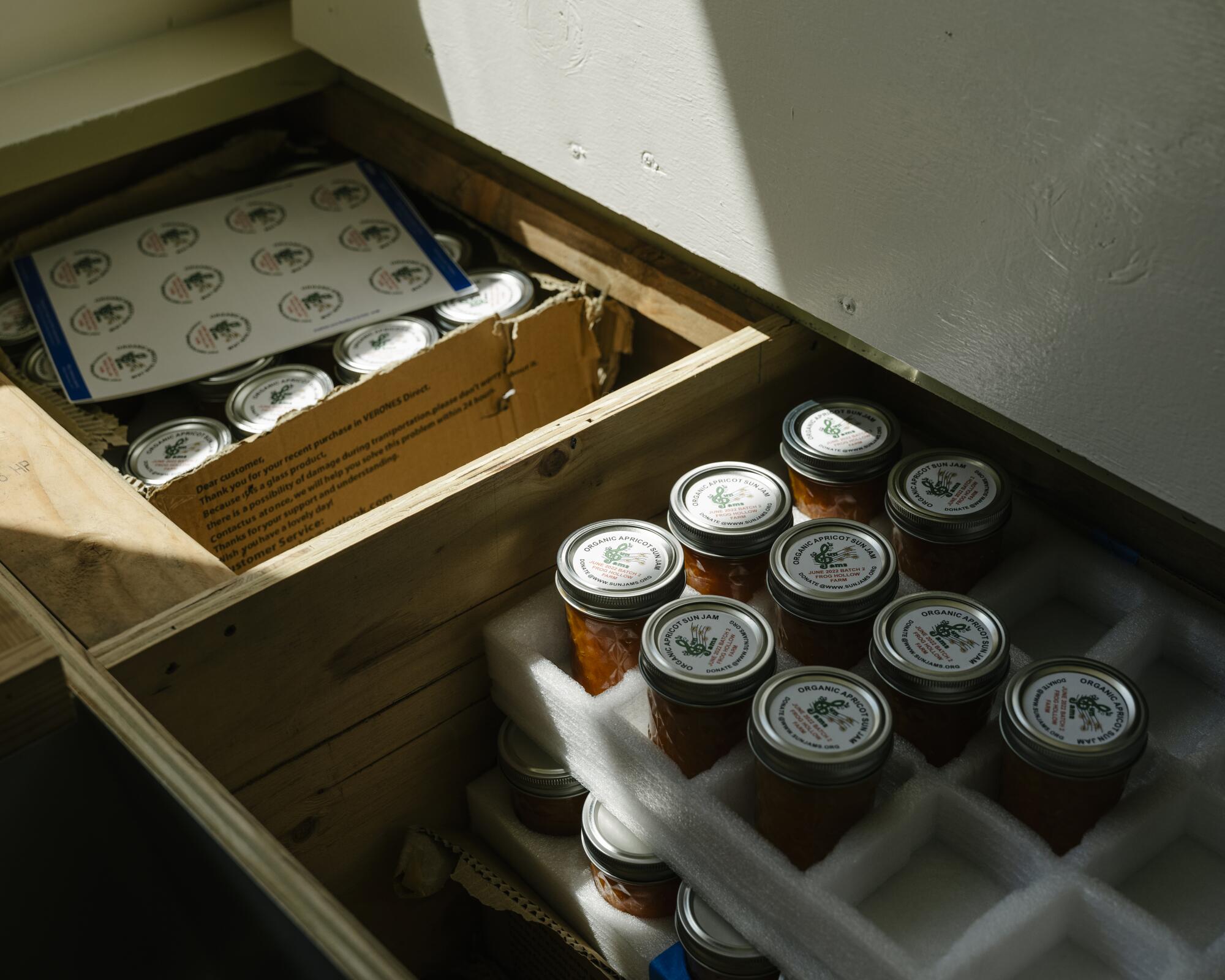
Amer’s son Ramzi gave me my first jar of sun jam, four months after we met masked and distanced in May 2020.
When the COVID-19 crisis began, Ramzi had been a general manager at the NoMad hotel in downtown Los Angeles. Less than a week after the March 2020 shutdowns, he brainstormed a project called FEW (Flour + Eggs + Water) for All with chef Tyler Curtis and pastry chef Mallory Cayon, who were also out of work. They began making fresh homemade pastas they sold for $12 per quart; with every purchase, they would donate one pound to the L.A. Regional Food Bank.
The team eventually came up with an idea to create an at-home tasting-menu project called Table 60: Three courses with a charming hand-drawn menu were packed into a tote bag with pockets for wine bottles. Brad Ray, then pastry chef at Antico Nuovo, contributed vanilla-bean ice cream with a racy amount of salt that somehow didn’t overdo it. Ramzi delivered them once or twice a week; he put together soothing R&B-centric playlists to accompany the meals.
I ordered Table 60 meals each time they were announced. When one menu included mezze like hummus and lemony marinated cucumbers, I half-shouted to Ramzi, who stood yards away in the driveway, about my ardor for food from this part of the world. Ramzi mentioned he had been raised in Lebanon. I told him about my best friend, Caline, and the trip we had taken to Lebanon the previous summer to see her family in Beirut.
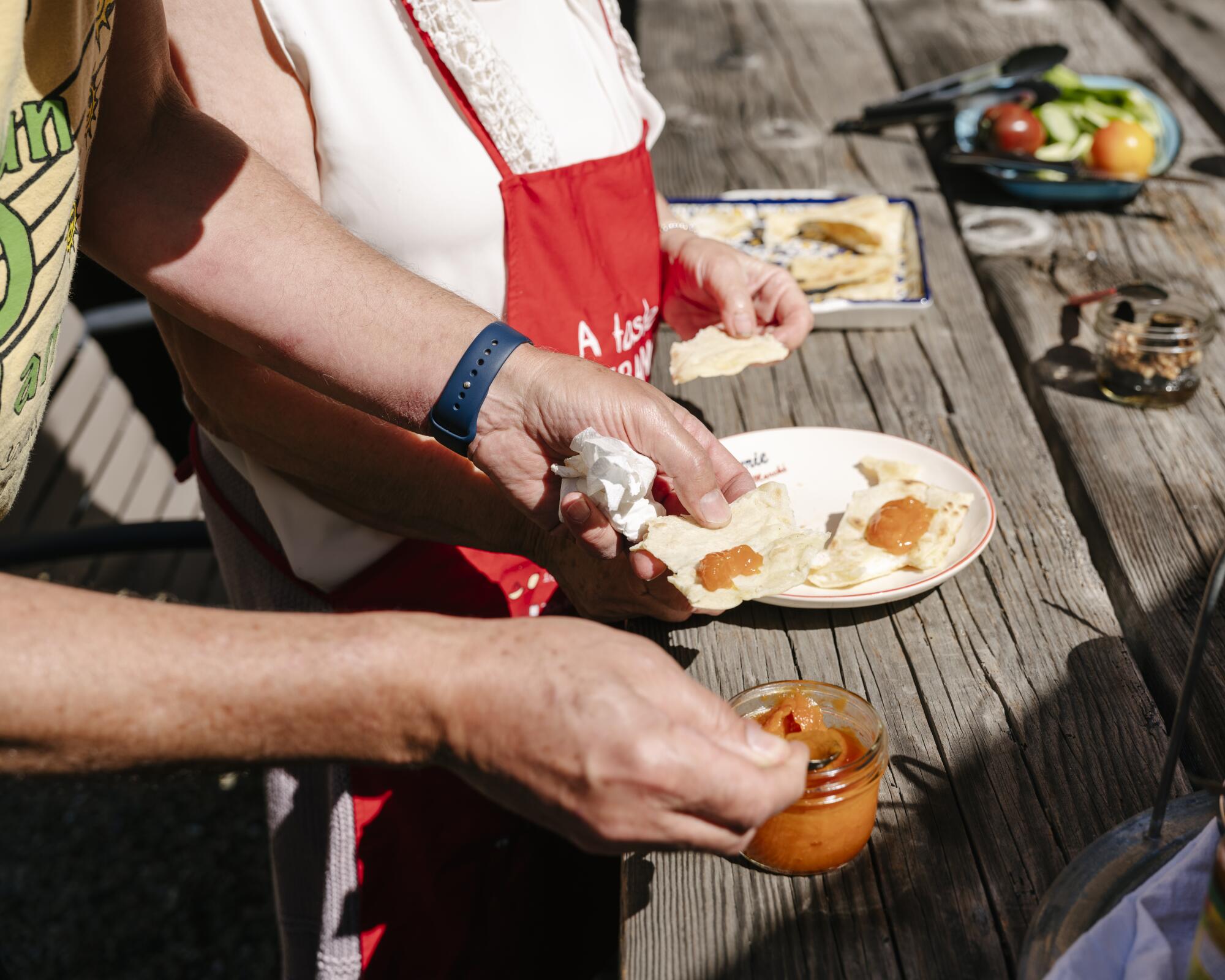
We lobbed memories back and forth, naming favorites: the stretchy, cheesy k’nafeh from corner bakeries, the competing falafel stands owned by two brothers, the best crackly edges from shawarma just shaved from the spit. The Souk El Tayeb Farmers Market and the glowing produce that reminded me of California. The amazing Bekaa Valley and its wineries. Eating dinner solo that night, those recollections kept me good company.
Like so many on-the-fly pandemic endeavors, FEW for All ran its course within the month. When Ramzi dropped off the final delivery, I had a gesture of thanks ready: a flask of iced arak, the anise-scented spirit that begins so many Lebanese feasts. He texted me later to say he’d sipped it on a rooftop when he’d finished his rounds through the city that night.
We didn’t communicate again until the catastrophic explosions in the Port of Beirut on Aug. 4; his family was safe (as were Caline’s parents), but the damage to already economically unstable Lebanon was incalculable.
Ramzi left Los Angeles a month later to study hospitality in Paris. Before he departed, he texted me to tell me he’d left some things outside my place. It was the flask I never expected to be returned, and the jar of epiphanic apricot jam. I didn’t learn until months later that it was his father who had made it.
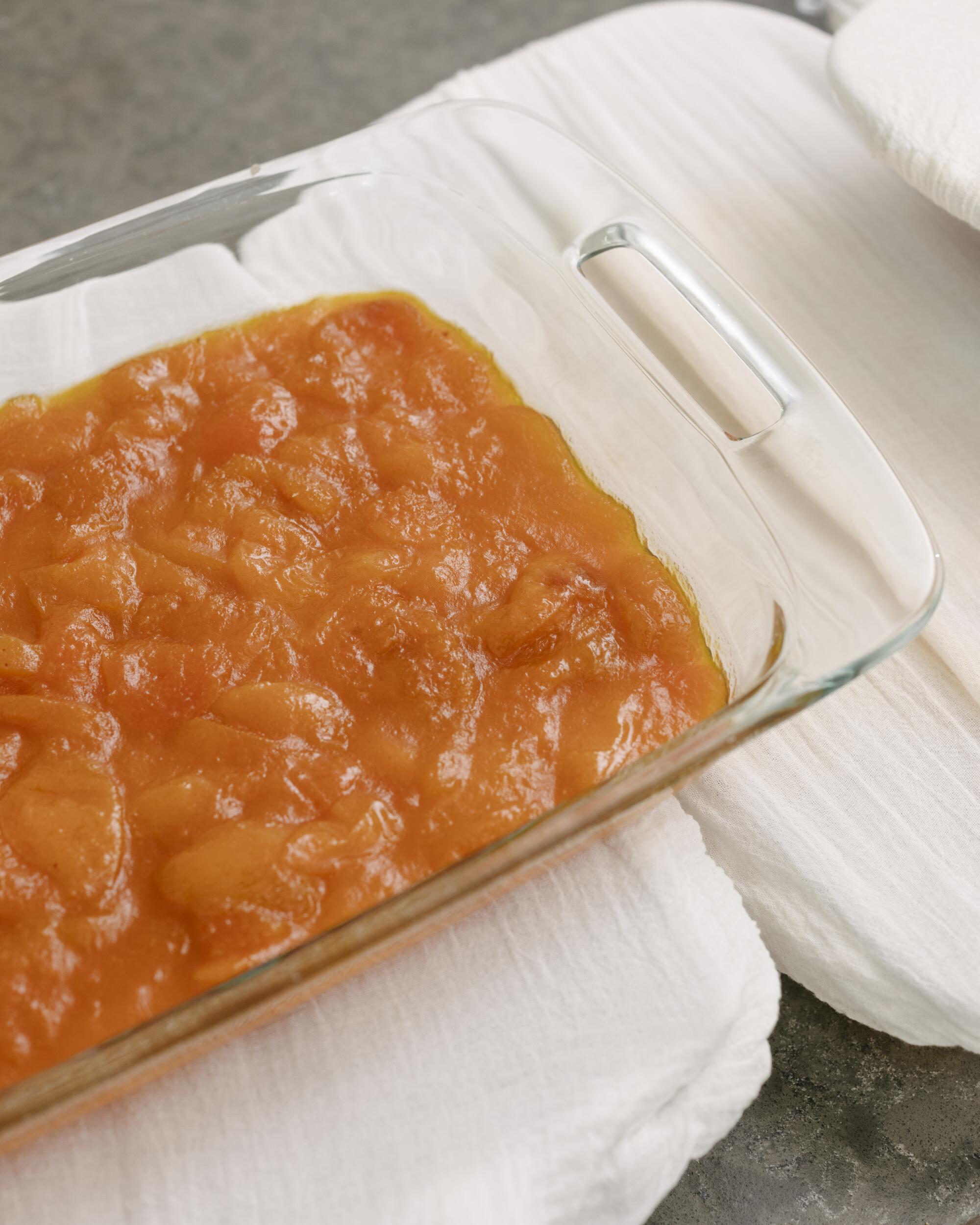
All my Lebanese friends know murabba el meshmosh. It’s still a seasonal labor of love in rural and urban regions across Lebanon, but people also tend to speak of it in the past tense. “That is how my grandma and mom made apricot jam, yes,” said Mona Jarudi, Caline’s mother, when I asked her about it. “The visual stays with me. It is the mother of all jams.” No one I know in Southern California has the bandwidth to make it; for them it’s mostly a deeply etched, faraway taste of home.
Amer and I met over lunch when he was passing through Los Angeles in March 2021, and a year later his family invited me for a feast at their home in Orinda. They fed me fattet al-makdous (lamb and eggplant layered with pita, or khoubz in Arabic), shish barak (fried ravioli-like meat dumplings), garlicky fava beans and, for dessert, atayef (half-moon-shaped pancakes filled with cheese and served in syrup scented with rose water). I hadn’t had a home-cooked meal brimming with such heart since visiting Lebanon.
We agreed then I would come two months later for a day of jam-making.
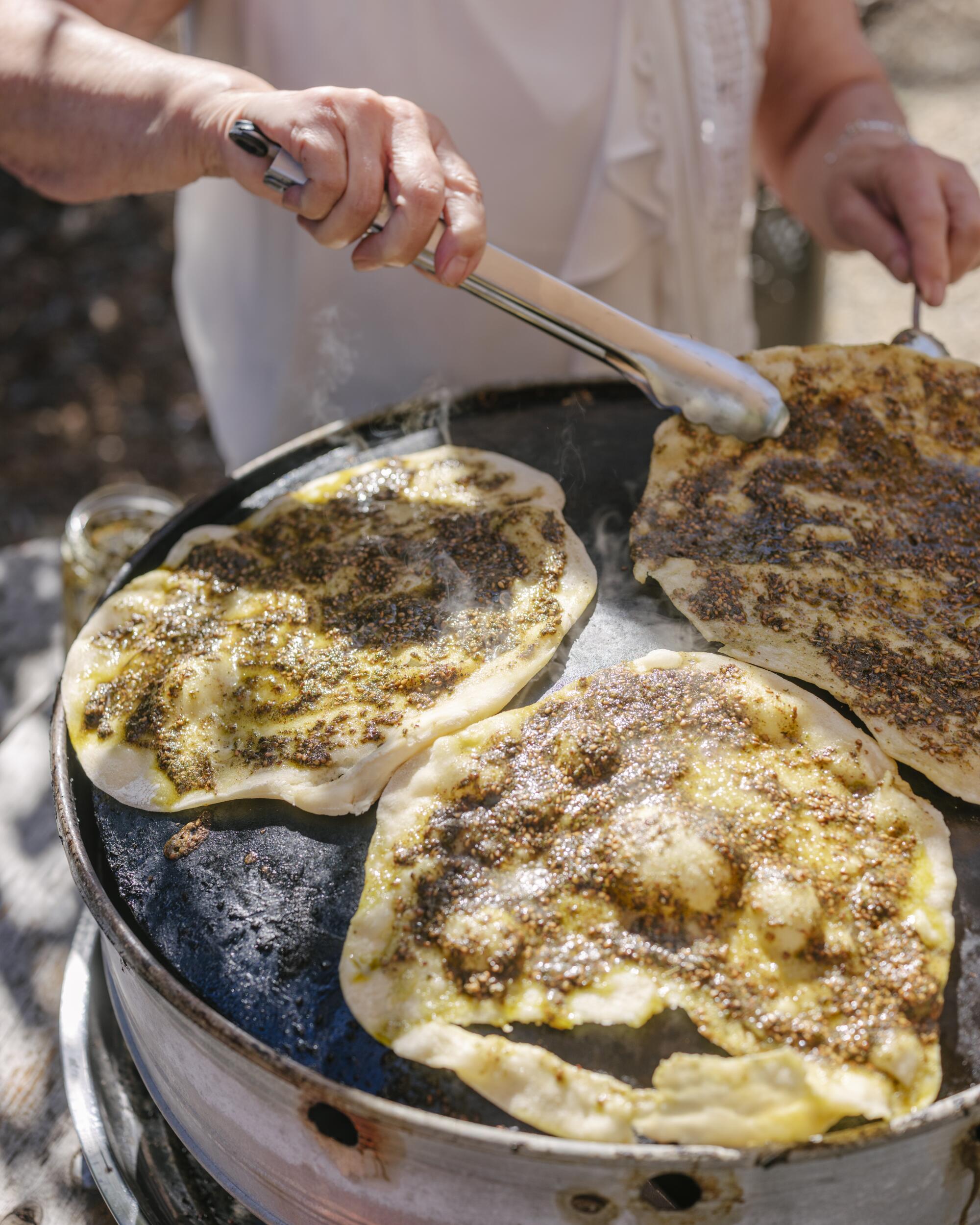
In the spirit of Lebanese hospitality, the late June morning began with Amer’s older sister Bushra Yamout stuffing us with mana’eesh, the beloved breakfast flatbreads, that she cooked outside on a domed griddle called a saj before covering them with za’atar and cheese.
Here is a California version of this Middle Eastern staple featuring whole-grain flour, cracked wheat, good olive oil and the fresh herb za’atar.
On the Budayrs’ kitchen shelf, I noticed a copy of Barbara Abdeni Massaad’s beautifully photographed and researched book “Mouneh.” The word broadly means “preserved foods,” and her work traces seasonal practices from making orange blossom water and pickled garlic in the spring to canning grated pumpkin jam and undertaking homemade arak in the fall.
Her instructions call for leaving murabba el meshmosh in the sun for 10 straight days. Amer prefers three or four, just until the jam has gelled and the flavors have concentrated.
He separates each batch by the farms from which he’s procured the fruit. As we began, he pointed out a platter labeled with the different varieties he had on hand: Blenheim, the California gold standard that a century ago grew over 80,000 acres across the state; Patterson, an ideal cultivar for all-purpose canning; and blushing designer hybrids with names like Cot-n-Candy and Angel Cot.
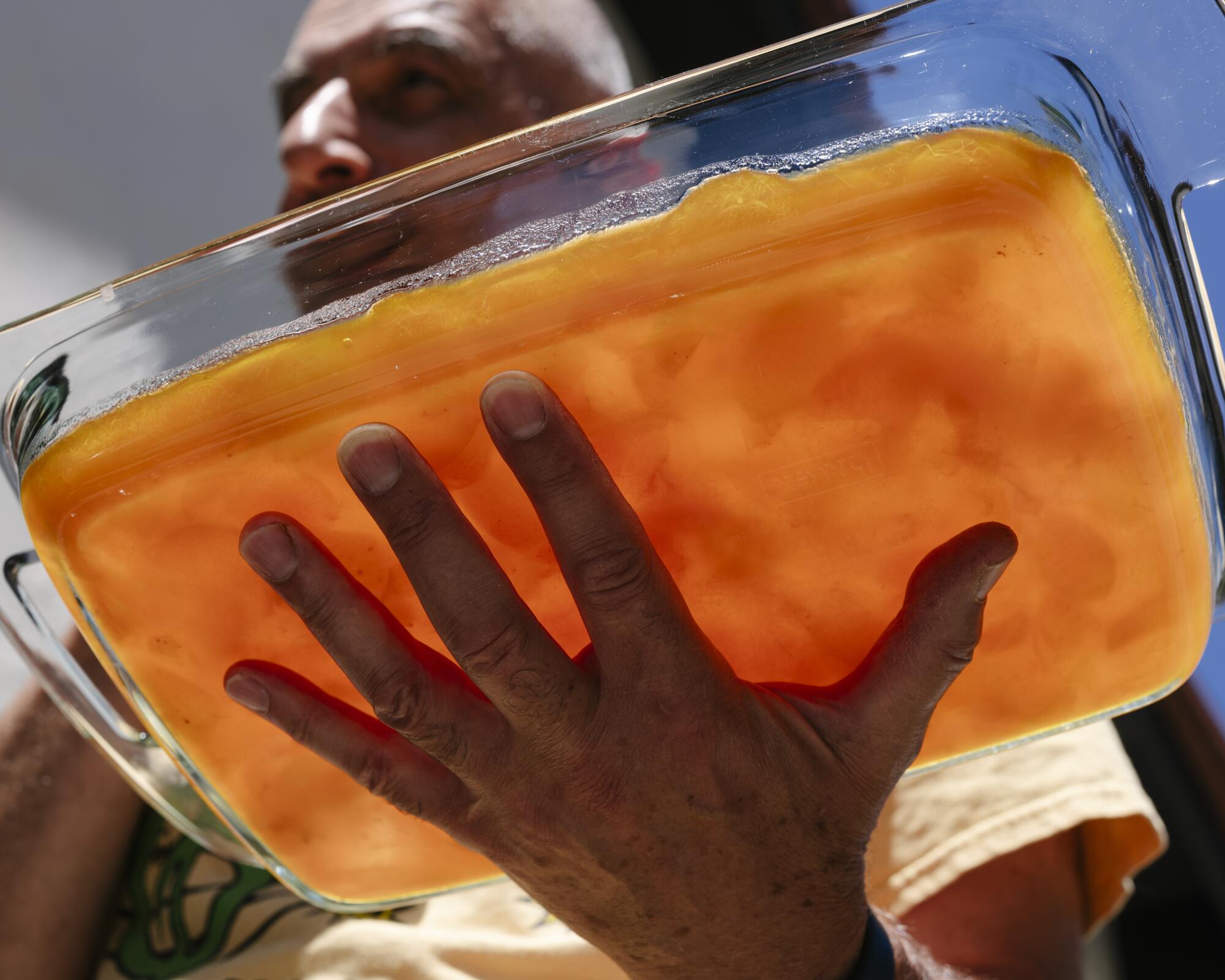
The Budayrs’ fundamental recipe calls for eight cups of cut fruit, two cups of sugar and a quarter-cup of lemon juice. That’s notably less sugar than many jam-makers add. Bushra nudges Amer to make the mix sweeter, but this is how he and Anna like it. (Me too.)
He had mapped out all the steps of the process in advance to demonstrate an accelerated version of his week: washing the apricots three times; seeding and cutting them, taking care to surgically carve out each fibrous center; macerating the fruit, usually for two days; boiling it in multiple pots on the stovetop; and pouring the cooking fruit into glass trays to set out in the sunshine. Amer was a researcher for part of his medical career, and it shows. He keeps a notebook detailing the steps, nuances and results of every batch.
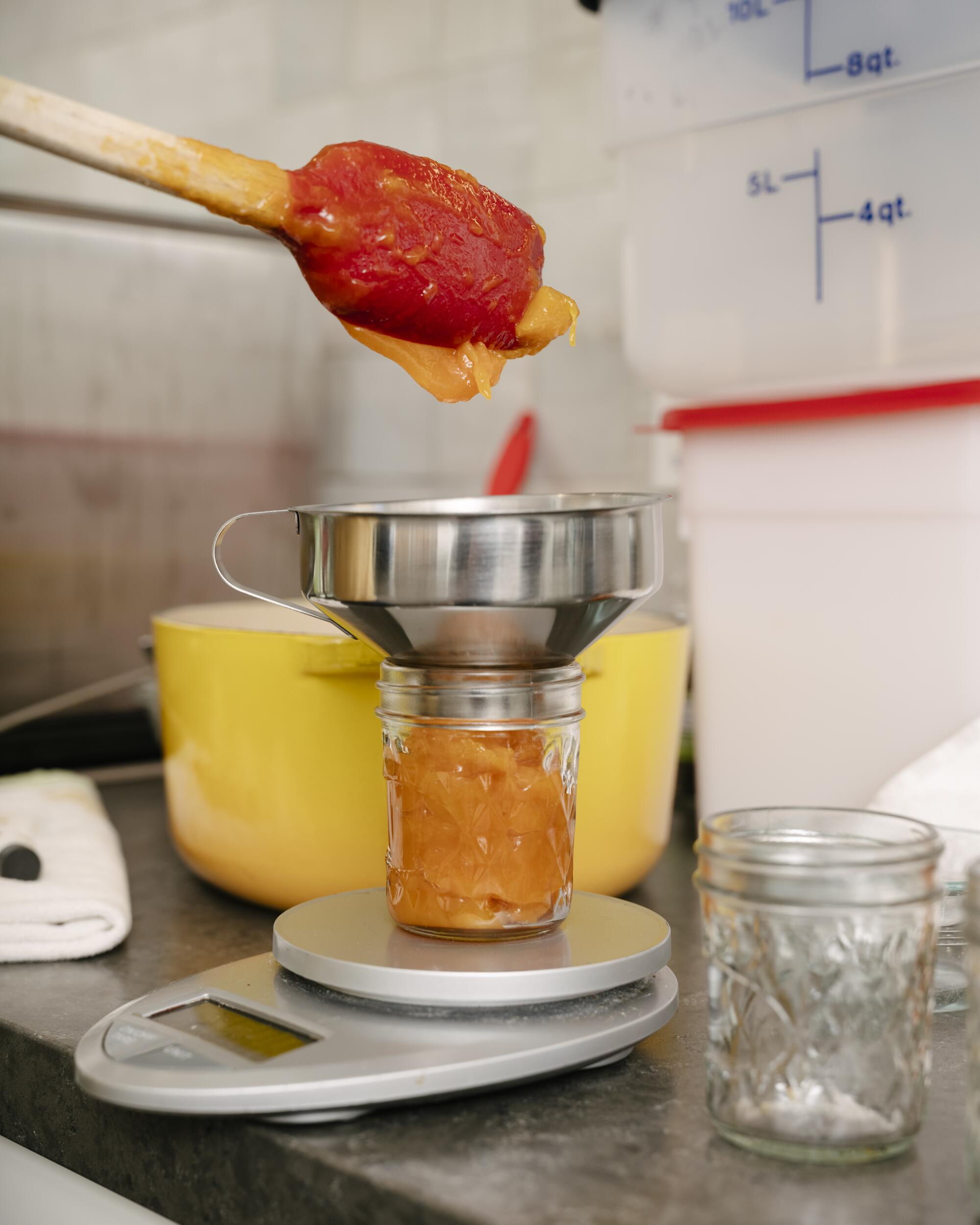
I asked him how he thinks his recipe might differ from his mother’s.
“All I remember clearly is that they put it out to cook without cover,” he said, laughing. He and Anna fiddled with meticulously taping cheesecloth in several layers over each tray for years, until Bushra began sewing covers made of cheesecloth that fit snugly over the edges.
Amer was ready for a nap after five hours of toiling, and I’d seen enough. I already knew the ultimate rewards of the effort. Before I left, we talked about the ambitious corner store and wine shop Ramzi was opening in San Francisco’s Dolores Heights neighborhood; he was partnering with Zack Negin of L.A.’s Tabula Rasa bar and shop, located in Los Feliz and North Hollywood, respectively. (The store, named Dolores Deluxe, launched in October. Ramzi’s place, and occasionally Tabula Rasa Shop in NoHo, are the only retail outlets where you can buy the sun jam).
We also touched on the state of Lebanon, how his daughter Anaya and I had ended up studying with the same tutor, and the Lebanese chefs we follow on Instagram and how much they do or don’t tinker with traditional foodways.
“It’s a completely emotional connection I think you have to the food,” Amer said to me suddenly. “It’s very endearing, very obvious and beautiful. It’s more like a native’s attachment.”
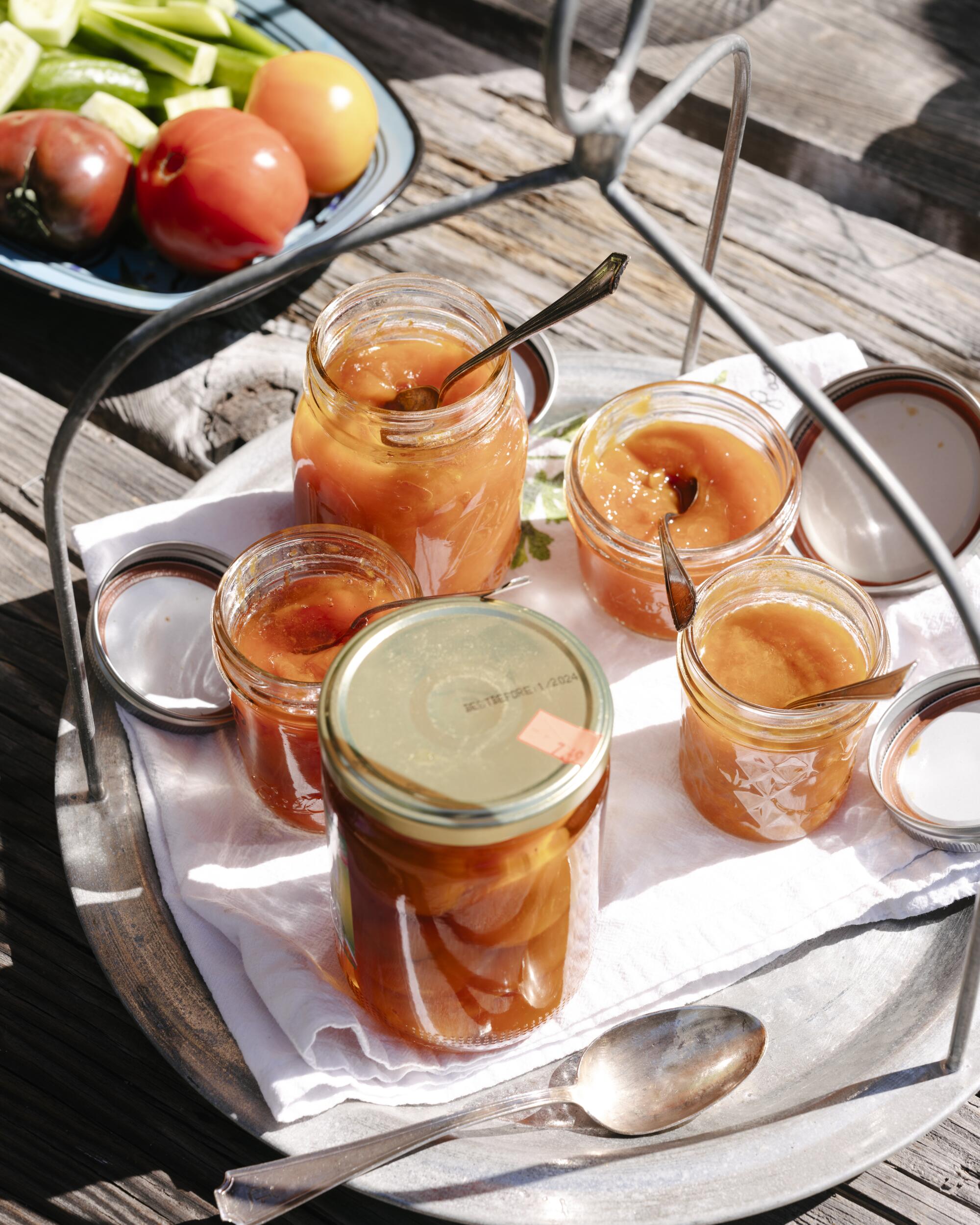
I can’t own anything close to that. But there is this: While writing this story a year later, as apricot season comes late, given California’s year of unruly weather, I pulled from the shelf “The Synonym Finder,” my favorite thesaurus. I was hoping for inspiration on other ways to describe jam and canning, and the marrow of the Budayrs’ dedication, and their presence in my life.
I looked up “preservation.” The second entry of alternates read: “salvation, saving, sheltering, safekeeping, safeguarding, protection, defense, guarding, custody, watch.”
Well, I thought. All these words are fitting.
More to Read
Eat your way across L.A.
Get our weekly Tasting Notes newsletter for reviews, news and more.
You may occasionally receive promotional content from the Los Angeles Times.
